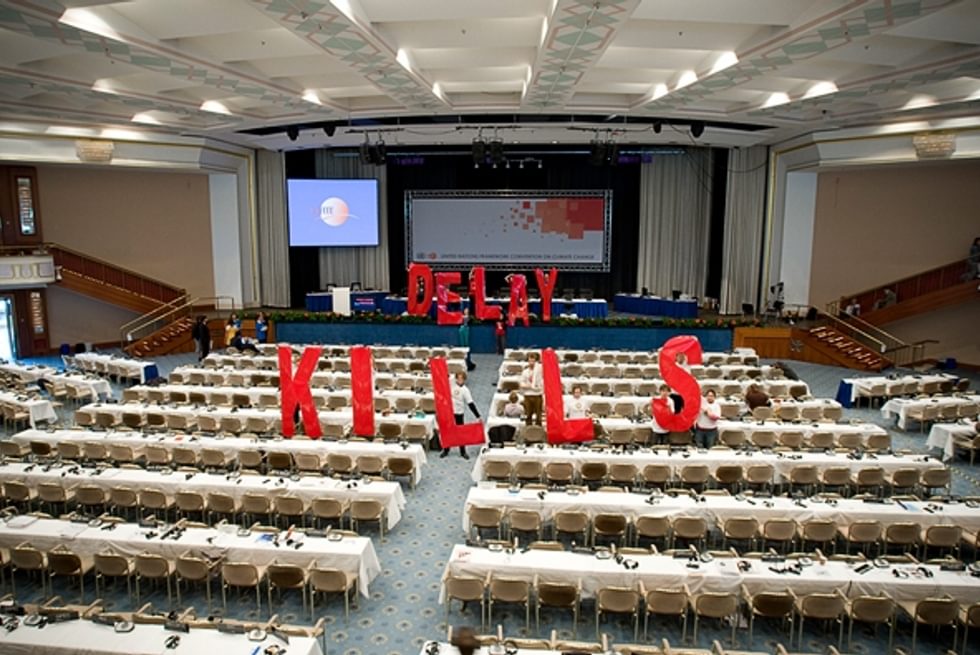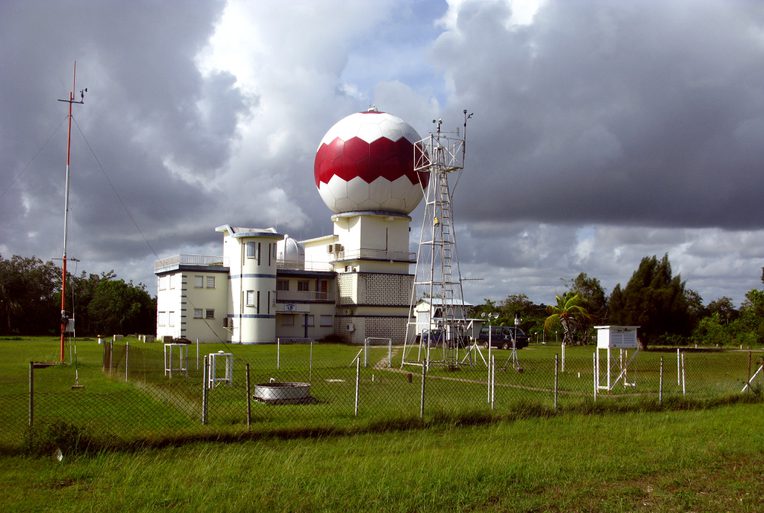Encountering the Climate Regime: “Useful” Climate Knowledge and the Work of Forecasts
From the Series: Negotiating the Crisis: Critical Perspectives on Climate Governance
From the Series: Negotiating the Crisis: Critical Perspectives on Climate Governance

The processes of knowledge production and circulation bound up with the United Nations Framework Convention on Climate Change (UNFCCC) run alongside those of other global policy areas including sustainable development and disaster risk reduction. Increasingly, attention is being drawn to the question of how to ensure that scientific evidence generated in relevant fields is “useful, usable and used” (Aitsi-Selmi et al. 2016). Organizers of the UNFCCC’s 26th Conference of the Parties (COP26) emphasized the scientific underpinnings of the negotiations; the Glasgow Climate Pact highlights “science and urgency,” given impacts both observed and anticipated. Scientific data and modelling are at the heart of the Intergovernmental Panel on Climate Change (IPCC) scenarios that anticipate outcomes of emissions pathways and associated policies to inform mitigation strategies; they are also supporting adaptation, notably through ‘climate services’ for National Adaptation Planning as established at COP17.
Led by the UN World Meteorological Organization, the Global Framework for Climate Services promotes the translation of weather data, climate model outputs, and other information into products that can be tailored to the needs of decision-makers with the aim of supporting “climate smart” adaptation in sectors including agriculture, water, health, energy, and disaster management. This focus on products that aid better decisions implies their value of usefulness. It is often accompanied by calls for improved usability of information, via efforts to enhance science communication or “co-produce” products by involving users in design. It also seeks to ensure climate information is used, by emphasizing usefulness/usability, and recognizing factors such as trust.
During fieldwork with producers, communicators and (potential) users of climate and weather services in Belize, Kenya, and the United Kingdom,[1] it became clear that the question of “use” was not straightforward. What does it mean to use a probabilistic forecast? How to evaluate the difference that using a forecast, outlook or projection makes? And what do these questions entail, given the circulation of multiple models and other modes of foresight that generate contending visions of presents and futures?

In her 2019 book What’s the Use? Sara Ahmed examines the “uses of use,” illuminating among other things the political assumptions underpinning utilitarian approaches to “useful knowledge.” She reveals how usefulness bears a moral weight that is not always opened to critical attention; one that has historically prioritized values of productivity and efficiency in the name of an undifferentiated greater good, while devaluing deviations from techniques of optimization that serve the status quo. We are reminded to ask: useful to whom, and for what?
Many decision-makers in water and agriculture sectors told us they did not use probabilistic forecasts more than a few days out. These included three-month seasonal climate outlooks showing how precipitation and temperature were expected to compare with climatological averages, based on global climate models and local information. While these probabilistic weather and climate products are being designed and supplied to guide more effective decisions—often to optimize resource management—we encountered few decision-makers (including in the United Kingdom, United States, Belize, and Australia) who claimed to use them in this way. Despite user familiarity with probabilistic information, and the potential for increasingly skillful forecasts to save money, effort—even reputation—on the basis of cost-loss calculations over time, not all decisions appeared amenable to this kind of calculated risk-taking. The probabilistic worlds of forecasts with multiple possible outcomes did not always align with social and institutional decision processes and expectations of accountability: one with-hindsight-wrong decision could be intolerable; resources for acting on a forecast may not be accessible to all. Ahmed (2019) also draws attention to “use instructions.” For some probabilistic forecasts these involve disclaimers. The UK Met Office advises civil contingency planners that their three-month outlooks are a “watching brief,” not to be used for “immediate action” or “committing resources.” Nonetheless, as Ahmed also notes, there can be a sense that the failure to use something risks denigrating the thing; potential users may also be deemed responsible for a missed opportunity.
On further discussion, decision-makers often revealed that they did look at the forecasts and treated them “contextually” alongside other information and knowledge. Here the boundaries of how people define and account for use and non-use become rather fuzzy. Evaluations are further complicated when human response to a forecast may itself alter the forecasted event: perhaps an anticipated loss of life from extreme weather is avoided by protective action; or a projection of heating influences policymakers to regulate emissions.
Conversations with UK water managers and regulators suggested another potential use for probabilistic forecasts: rather than optimizing for efficiency, they might adjust management towards resilience, aiding preparation for a worst-case scenario exceeding historical records, given that climate change is shifting the parameters. In Belize, some sugar growers, concerned about the implications of enrollment in a crop management system, used the discussions to push for farmers’ rights. Public health planners in England inserted a “level 0” in heatwave/cold weather action plans, emphasizing the need for year-round actions. In Kenya, I observed efforts to communicate seasonal forecasts to pastoralist communities, in a workshop that brought Turkana diviners together with meteorologists, revealing mutual interests but also frictions between futures conjured by computational models on one hand and haruspicy[2] on the other. In each of these encounters, an intended or anticipated “use” of scientific forecasts was accompanied if not overshadowed by alternative uses, plural knowledges, and emergent political questions about for what and for whom science might be useful, usable, and used.
Use is not only an activity but a relation (Ahmed 2019, 23). Thinking about it critically directs us to the work that goes into climate projections and their reception in, around, and beyond UNFCCC processes: from what uses “count” to what these relations tell us about social and political worlds in times of environmental change. Along with the outputs of computational models, climate services carry a range of epistemic and moral judgments concerning development, hope, uncertainty, and responsibility. Negotiations of their usefulness, usability, and use are arenas where people with diverse experiences and claims to expertise encounter the global climate regime, national institutions, and each other; where priorities and expectations are set and managed but also questioned and contested.
[1] This essay draws on collaborations with Steve Rayner, Ana Lopez, and Liz Stephens. Our interlocutors included modelers, forecasters, government officials, water managers, humanitarian responders, agricultural extension officers, and farmers.
[2] Divination by reading animal entrails.
Ahmed, Sara. 2019. What’s the Use? Durham N.C.: Duke University Press.
Aitsi-Selmi, Amina, Kevin Blanchard, and Virginia Murray. 2016. “Ensuring Science is Useful, Usable and Used in Global Disaster Risk Reduction and Sustainable Development: A View Through the Sendai Framework Lens.” Palgrave Communications 2, 16016.